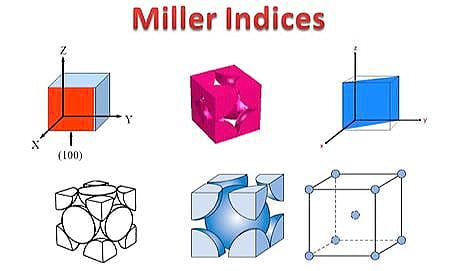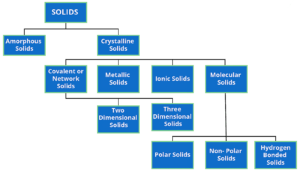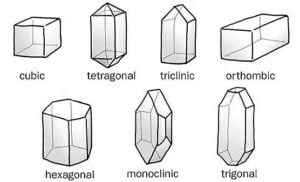W. H. Miller in 1839 represented the planes of a crystal by a set of three integers h, k and l, called the Miller indices.
To obtained the Miller indices for any crystal plane, the ratios of the intercepts made by the unit plane to those made by the given plane or its parallel plane are converted to clear fractions.
Unit plane :- The faces of a crystal are described in terms of a plane, called the unit plane or standard plane.
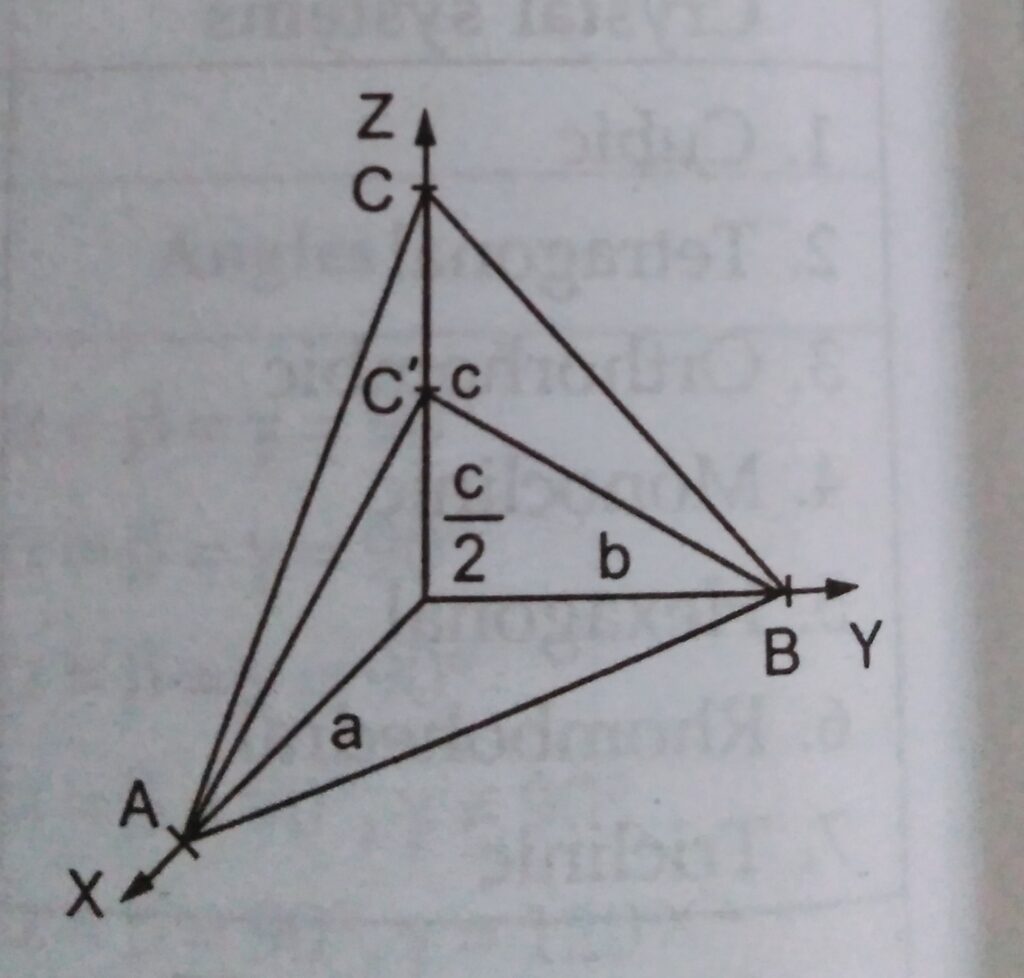
Plane ABC which cuts the axes X, Y and Z at A, B and C respectively with intercepts a, b and c is called the unit plane.
The procedure for determining the indices for a plane is as follows.
- Prepare a three column table with the unit cell axis at the tops.
- In each column enter the intercept ( expressed as a multiple of a, b and c ) of the plane with that axis.
- Invert all numbers.
- Clear fractions to obtain h, k and l.
For the plane ABC’, the indices can be obtained as follows.
The plane ABC’, intersects the axes at x = a, y = b and z = c / 2.
Let us prepare the table as described below.

The plane ABC’ is then said to be (1 1 2). The unit plane is labelled as (1 1 1).
Indices are enclosed within parentheses and the negative sign in Miller indices is indicated by placing a bar on the integer. In practice, an index greater than 5 never occurs.
For a plane running parallel to the XY plane, the intercepts on the three axes are ∞, ∞, and 1. The Miller indices of such a plane are 1 / ∞ , 1 /∞ , 1 / 1 or ( 0 0 1 ).
Similarly, the faces parallel to the YZ and ZX planes will have the Miller indices (1 0 0) and (0 1 0) respectively.
Two parallel planes in a crystal have the same Miller indices.
Miller indices of some shaded planes are given below.
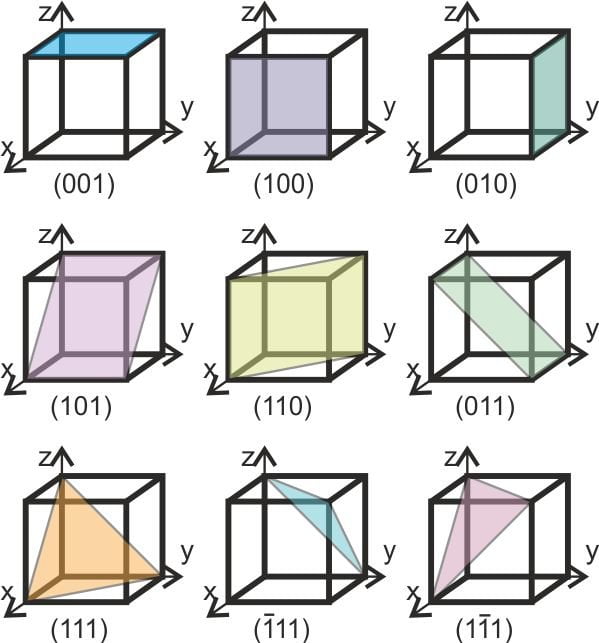
d-Spacings :-
The space between two parallel planes in a cubic crystal ( d- spacing ) is given by
d = a / √h² + √k² + √l²
where a is the length of the side of the cube and h, k and l are Miller indices of the parallel planes.
For the planes ( 1 0 0 ), ( 1 1 0 ) and ( 1 1 1 ) in a cubic unit cell,
d₁₀₀ = a / √1² +√0² + √0² = a
d₁₁₀ = √1² + √1² + √0² = a / √2
d₁₁₁ = a / √1² + √1² + √1² = a /√3
Problems.
- Calculate the distance between (1 1 1 ) planes in a crystal of Ca. Repeat the calculation for the ( 2 2 2 ) planes. Which planes are closer ?
solution.
We have,
d = a / √h² + √k² + √l²
d₁₁₁ = 0·556 / √1² + √1² + √1² = 0·321 nm
and d₂₂₂ = 0·556 / √2² + √2² + √2² = 0·161 nm
The separation of the ( 1 1 1 ) planes is twice as great as that of the ( 2 2 2 ) planes.
2. Calculate the ratio of separation between successive ( 1 0 0 ), ( 1 1 0 ) and ( 1 1 1 ) lattice planes in a cubic cell.
Solution.
We have,
d = a / √h² + √k² + √l²
Thus, d₁₀₀ = a / 1² + 0² + 0² = a
d₁₁₀ = a / √1² + √1² + √0² = a / √2
and d₁₁₁ = a / √1² + √1² + √1² = a / √3
Hence, d₁₀₀ : d₁₁₀ : d₁₁₁ = a : a / √2 : a / √3
= 1 : 1 / √2 : 1 / √3

